MRTS train journey observation was conducted in Chennai, from Velacherry MRTS station to Park Town. The aim was to basically observe the infrastructure, nuances of the journey, hidden complexity of passengers while transit and suggestions for enhancement.
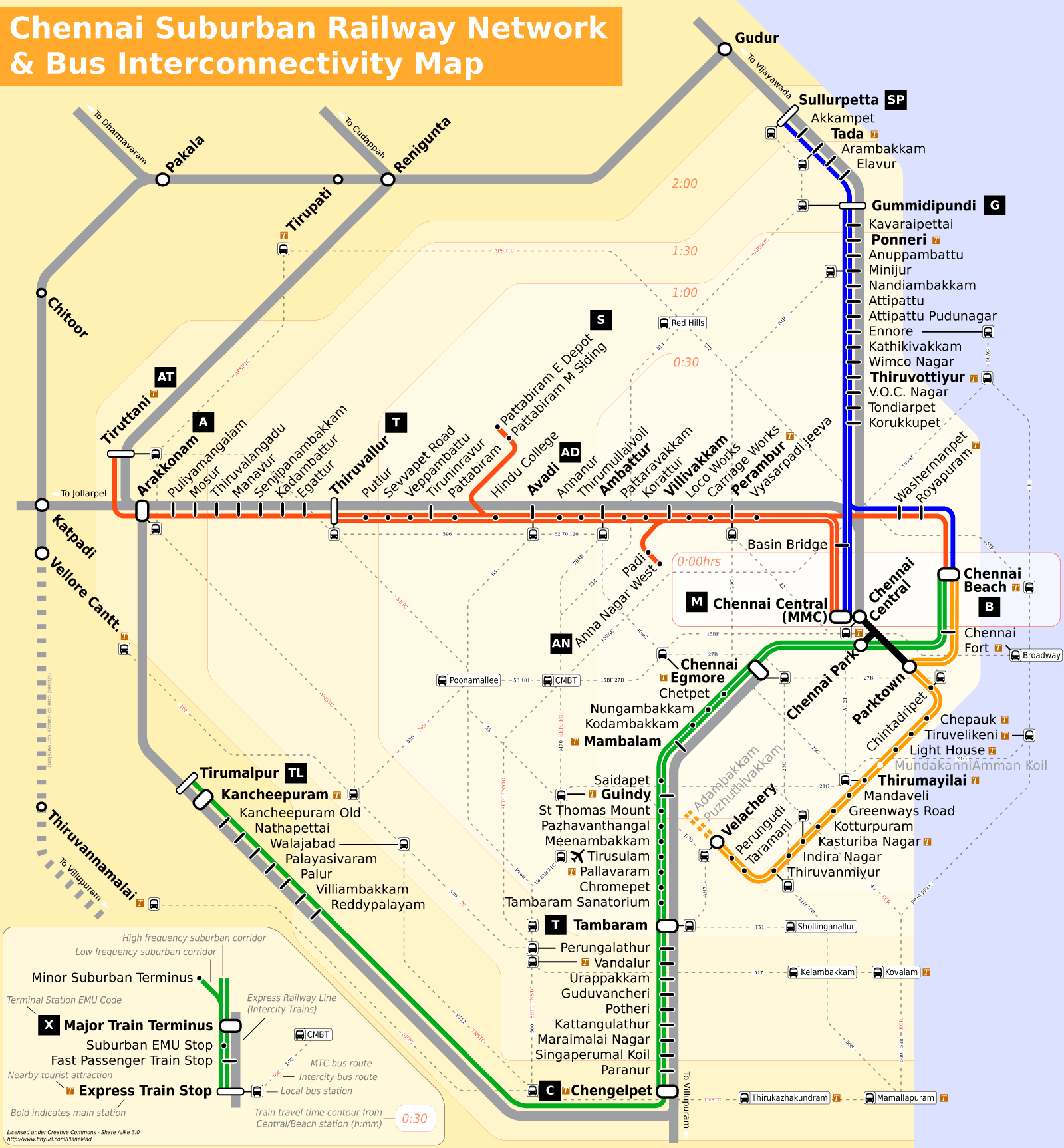
Inadequate maintenance and usage of station facilities. Improper maintenance of stations, vandalism, non-functional station amenities such as lifts and escalators, passengers insecurity.
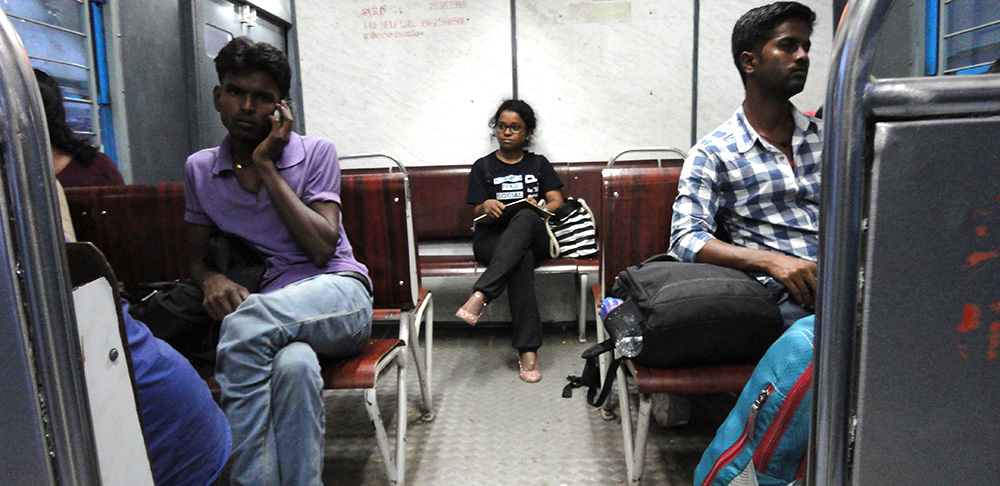
I captured the social and behavioral pattern of the passengers, cultural design, demography, transit model, as well as amenities of the train and empathized the problem behind.
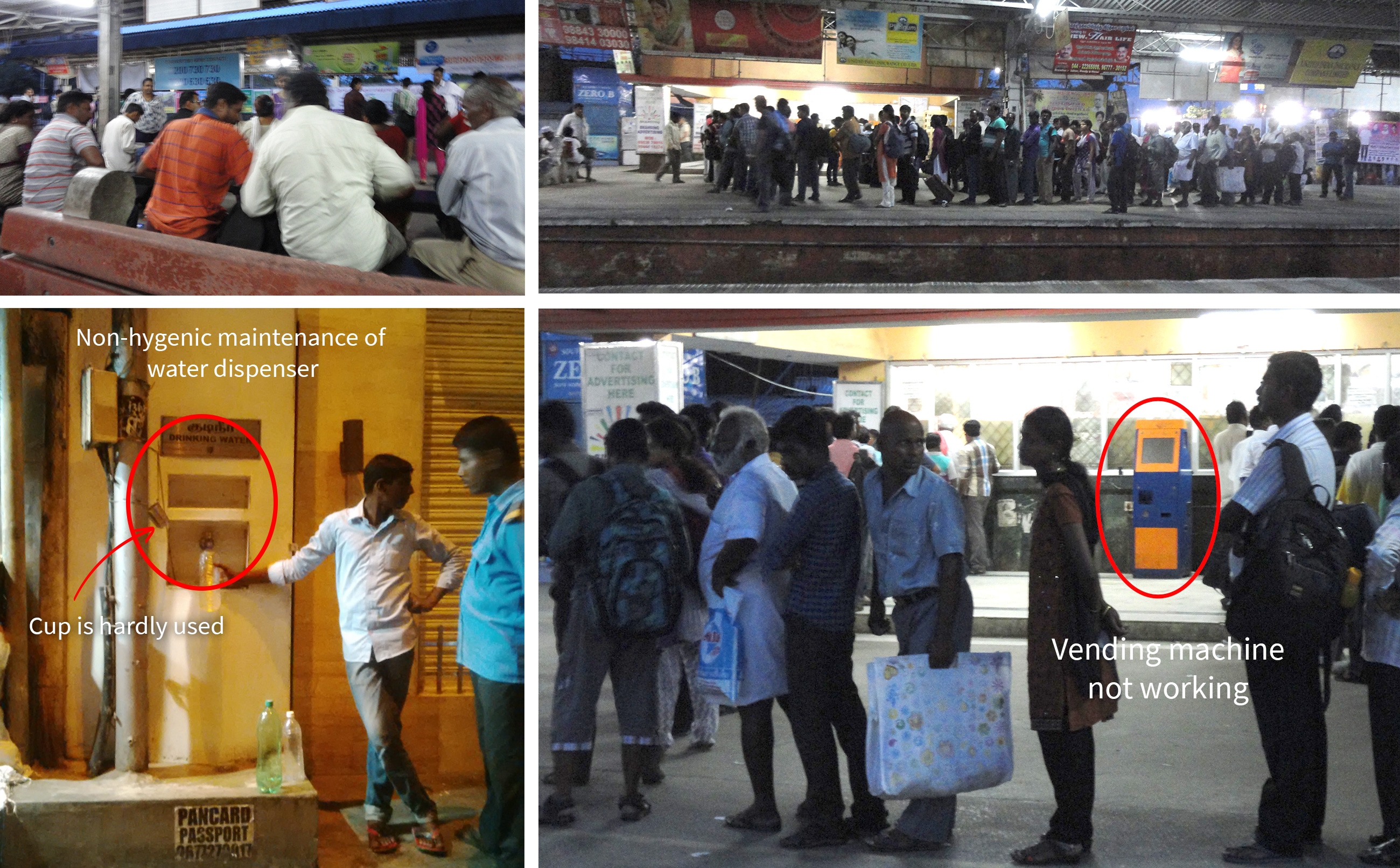
General compartments, first class and ladies compartments are partitioned accurately provided with words and pictorial representation. MRTS uses the same gauge as the suburban system, thus allowing the movements of passengers, vendors carrying luggages between the existing suburban lines and the MRTS. Do not have automatic doors like a metro train. So passengers can board quickly at the same non-safe as they try to hang out when it is crowded.
For every stop and start the train honks to alert the passengers to board or get down.
Passengers who commute to work are the avid users of MRTS Train. In a highly populated country like India, train is considered to be a common mode of transporation for all genders across ages. And I could identify 4 key personas emerging out of the observation.
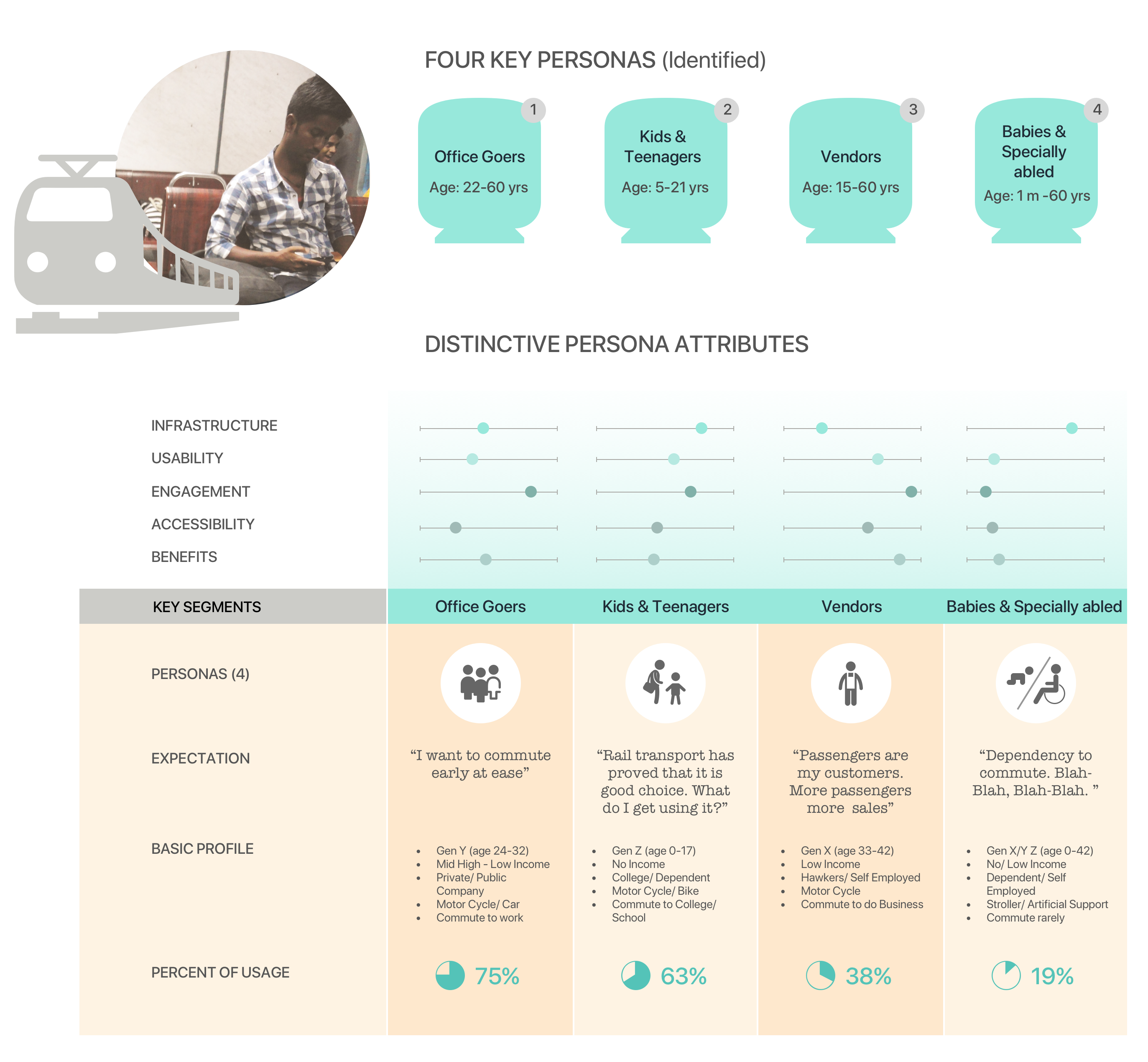
Rent out the station space for commercial purpose to attract more crowd as well as get more revenues.
Ticket vending machines should be in a running condition. Special focus would be on pedestrian facilities that would provide access to MRTS stations from nearby roads and bus stops, apart from identifying new feeder routes.
Promise public safety, integrated ticketing systems, better facilities for passengers, increased frequency of services taking into consideration of passenger demands, and also better maintenance.
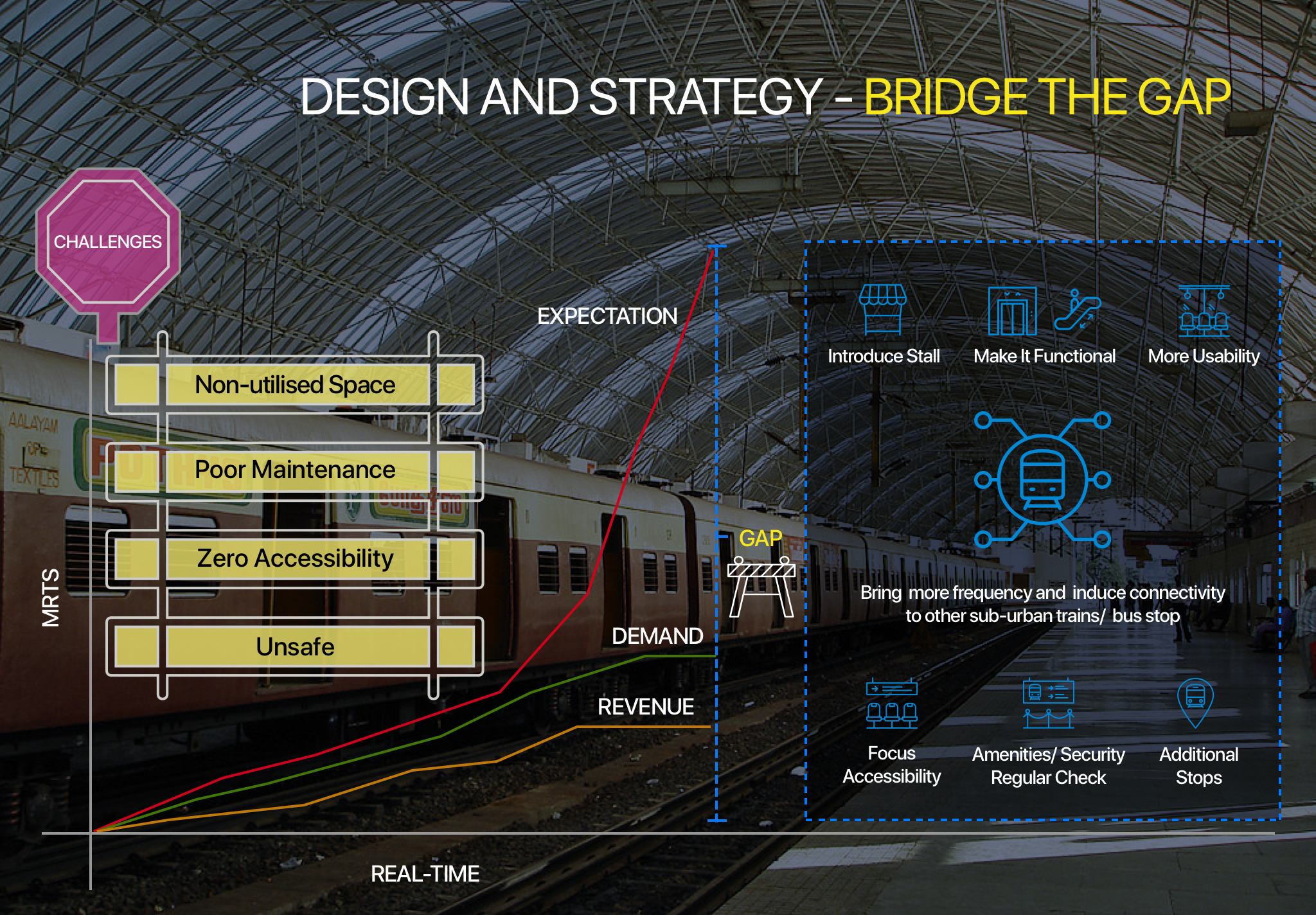
Integration with chennai metro would not bring better connectivity inside the city but also bring more usage rate. Design and Experience can influence the revenue model of a state or country, shape the perception, influence the behavior and eventually build a better future.
“Design for the change and be socially responsible”